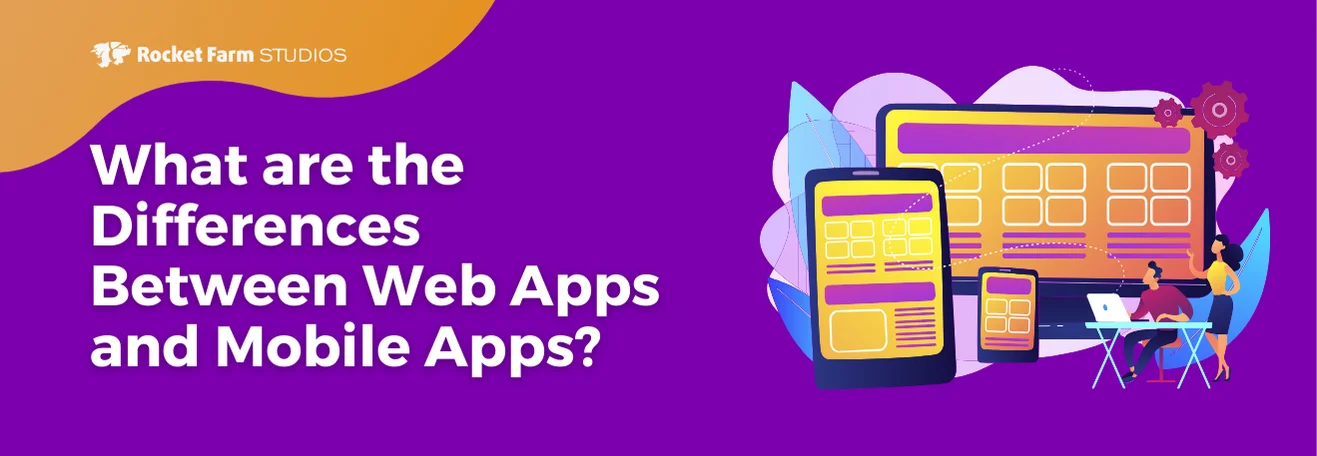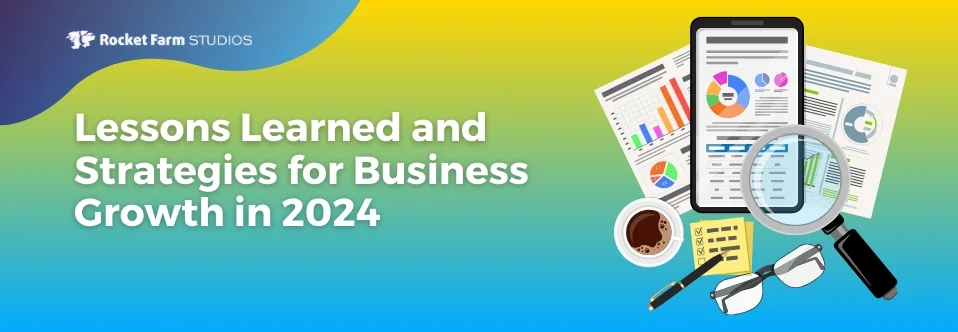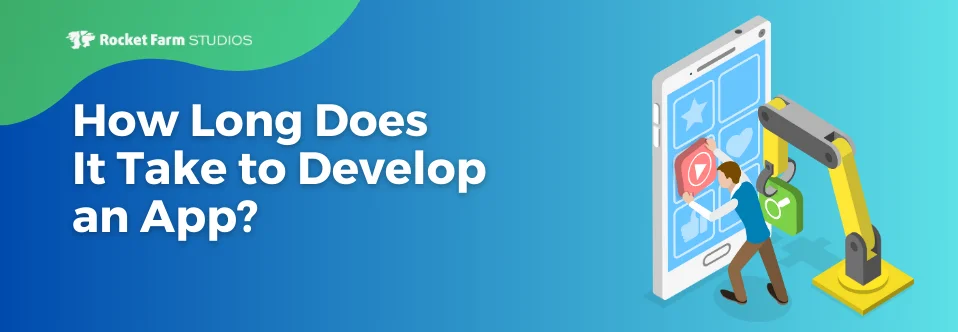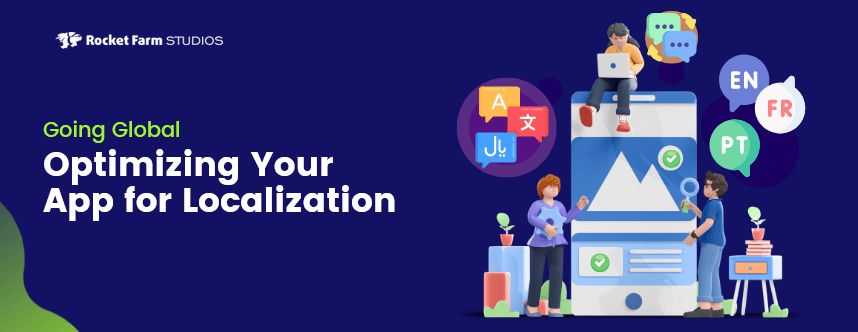Well, buckle up folks, because today we’re talking about one of the most critical aspects of launching a killer app: marketing. You might have the most amazing app in the world, but without a solid marketing strategy, it might as well be a tree falling in the forest with no one around to hear it.
As it stands, there were over 6.6 billion smartphone users globally in 2022 that used mobile apps every day. It’s even projected to hit 7.8 billion in 2028! That’s a heck of a lot of potential users, and you’re missing out if you don’t have a marketing plan that targets them effectively. But don’t worry, because I’m here to tell you that many of the most successful apps out there have nailed it with the right marketing strategy.
So, how do you get there? It all starts with identifying your target audience, figuring out what sets your app apart from the competition, and crafting messaging that speaks directly to your users’ needs and desires. That’s right, it’s all about user-centric marketing, people!
But it’s not just about crafting compelling messaging; it’s also about selecting the right channels to reach your target audience. Did you know that social media platforms like Facebook and Instagram have a whopping 73% success rate when it comes to promoting mobile apps? That’s some serious data-driven marketing right there!
In this guide, we’ll dive into the nitty-gritty details of app marketing, including conducting market research, defining your value proposition, selecting the right channels, and measuring your success.
So, whether you’re launching a brand new app or looking to take your existing one to the next level, stick around for some expert insights on how to create a killer app marketing strategy.
Understanding Your Target Market
Target market refers to the specific group of consumers or businesses that an app is designed to serve. Understanding your target market allows you to tailor your marketing strategy and product development efforts to meet their unique needs and preferences.
By identifying and focusing on your target market, you can maximize the impact of your marketing efforts and ensure that your app resonates with the right audience.
To identify your target market, consider the following questions:
- Who is your ideal customer?
- What are their pain points?
- What are their needs?
- How does your app address these concerns?
- What are their demographic characteristics (age, gender, location, etc.)?
- What are their interests and hobbies?
- How do they typically discover new apps or products?
- What are their preferred communication channels?
- What motivates them to download and use an app?
- What factors contribute to their long-term engagement and satisfaction with an app?
By answering these questions, you’ll be better equipped to develop a marketing strategy that resonates with your target audience and effectively addresses their needs and preferences.
Example: If your app is designed to help freelancers manage their finances, your target audience might be self-employed individuals, independent contractors, or small business owners.
In addition to focusing on your own target market, it’s also a good idea to keep an eye on your competitors’ target markets. This can help you better understand the market and inform you about your potential customer’s trends, preferences, and needs. In doing so, you may also tap into any areas of the market that your competitors are not currently focusing on, giving you a newfound competitive edge.
To conduct market research, focus on the specific group of people (or businesses) that you want to research. This could include demographics such as age, gender, income, education, location, or industry. Also, consider how you will perform the research, such as collecting information from surveys, focus groups, interviews, online research, or secondary data analysis.
Once you have all the necessary information, you are ready to refine your research and determine your target market.
Building User Personas
User personas, as we’ve come to appreciate, are fictional representations of your ideal customers, carefully crafted based on research, data, and intuition. These personas help paint a vivid picture of the people you’re targeting, giving life to otherwise lifeless data points. They encapsulate demographics, motivations, pain points, and even the most subtle nuances of behavior.
The beauty of user personas lies in their ability to humanize your audience, encouraging a deeper connection with the individuals you’re trying to reach. By visualizing your users as real people with real problems and desires, your marketing strategy becomes more empathetic and targeted, leading to more meaningful engagement.
Developing user personas requires meticulous attention to detail. Start by gathering data from various sources, including app analytics, surveys, and interviews with existing users. Look for patterns and trends that can inform your understanding of their motivations, preferences, and behaviors.
Let’s explore the research done for a freelance financial app, and to better understand its target audience, let’s take a closer look at an example of a user persona.
- Meet Sarah, a 32-year-old working mother of two who manages her own freelance graphic design business.
- Sarah is tech-savvy and constantly on the go, relying heavily on her smartphone to manage her busy schedule.
- She is always looking for ways to streamline her workflow and stay organized.
- Sarah’s pain points include juggling work and family responsibilities, managing multiple projects simultaneously, and staying on top of her finances.
- She needs a comprehensive app that can help her manage her business, track expenses, and automate invoicing.
With its intuitive interface, customizable features, and integrated financial management tools, the app addresses Sarah’s concerns by providing her with the tools she needs to stay organized and focused on growing her business.
As you craft these personas, remember that they are living, breathing entities that evolve with time. Don’t be afraid to revisit and refine them as you learn more about your users and the ever-changing app landscape.
Check out our previous blog that shows you exactly how to build your user personas.

Defining Your Value Proposition
Your app may be a technological marvel, but if it doesn’t solve your users’ problems, it won’t gain traction. Look back at your target market research to address these questions:
- What problems do your users currently face?
- How does your app solve those problems and benefit your target market?
- What is the unique benefit that your product/service provides to your customers?
- How does your app differentiate from similar apps in the market?
- What are the key features that your target market values the most?
- How can your app improve your target market’s daily lives or work processes?
- What specific pain points does your app address that competitors do not?
Identifying these points will help you understand what sets your app apart from your competitors. Consider what makes you different, such as your app’s features, benefits, quality, price, or customer service.
Example: Using our freelancer finance app example, your unique value proposition might be that it automates tax calculations and tracks expenses in real-time, saving users time and reducing errors.
When crafting messages that convey your unique value proposition (UVP), avoid focusing solely on features. Instead, highlight the overall benefits that address your users’ specific pain points.
Once you craft this messaging, make sure to share it consistently across all of your marketing efforts, on your website, social media channels, and more.
Use visuals and storytelling such as images, videos, and infographics to help highlight the benefits of your product or service and share your UVP.
Choosing Your Marketing Channels
There are numerous marketing channels available today, and selecting the right ones is critical to the success of your marketing strategy. Some of these channels include:
- App store optimization
- Social media
- Email marketing
- Influencer marketing
- Content marketing
- Pay-per-click advertising
- Search engine optimization
To better evaluate which channels are best suited for your target market, first understand the user’s preferred channels and second, which are the most effective in communicating your UVP.
Example: For a freelancer finance app, you might prioritize social media platforms popular among freelancers, such as LinkedIn or Twitter, and focus on content marketing through blog posts and guest articles on industry-specific websites.
To accomplish this, be sure to test, measure, and optimize your marketing efforts. With the variety of marketing methods available, costs can add up quickly. It is critical to set up marketing budgets and determine the best return on investment (ROI) for each marketing channel.
First, define your marketing goals:
- Do you want to increase sales?
- Generate more leads?
- Build brand awareness?
Clearly defining the answers to these questions will assist you in tracking your progress and determining which channels deliver the best ROI.
Next, figure out how much you want to spend.
- Determine the cost of each marketing channel, including advertising spend, personnel, and other expenses.
- Compare the ROI of each marketing channel to determine which is delivering the best results.
Lastly, based on what you find, make adjustments accordingly, such as:
- Allocating more budget to the channels that deliver the best results
- Tweaking messaging or visuals to increase engagement and conversion rates
- Pausing or decreasing spend on channels that underperform
Attributing performance metrics to your marketing goals can help you track progress and make data-driven decisions:
- Sales: Track overall revenue and conversions.
- Lead generation – Track the number of leads generated and their quality.
- Brand awareness: Track metrics such as social media engagement, direct website traffic, and brand mentions.
Creating Compelling Content
Content is king when it comes to marketing. It drives your target market to understand your offering and, more importantly, why they should care. It also allows you to build trust and better engage with your audience.
“What really helps consumers decide to buy or not to buy is the content of your advertising, not its form.” – David Ogilvy
Choose the right type of content to share, such as social media posts, app descriptions or screenshots, videos, blogs, etc. Ensure the content is strong and relatable to your users. Don’t post just to post; make it meaningful.
Example: For a freelancer finance app, you might create blog posts about tax tips for freelancers, case studies showcasing how your app has helped other freelancers, and share user testimonials on social media.
When crafting content, consider why your users will care. If your content answers this question, you are well on your way. Some of the best methods to craft compelling content are:
- Knowing your audience and writing FOR them
- Providing value (again, WHY should they care?)
- Adding keywords to your content to improve its visibility in search engines
- Using strong and effective headlines that catch users’ attention
- Being clear and concise (avoid overly technical terms and stay true to your brand messaging and UVP)

Measuring and Improving Your Results: A Data-Driven Approach
After pinpointing your target market, cherry-picking the best channels, and crafting compelling content, it’s crucial to evaluate the fruits of your labor. By tracking your results and keeping a close eye on progress, you can identify which marketing channels and strategies are yielding the highest returns. This enables you to fine-tune your budget and overall strategy to maximize ROI.
There are a plethora of tools available to measure your app marketing results. Native social analytics tools are built into each social channel, offering quick insights into the efficacy of your efforts on these platforms. Google Analytics is another valuable resource for monitoring website interactions and user behavior. Regardless of the tools you choose, adopting a data-driven marketing strategy empowers you to make informed decisions and avoid guesswork.
Remember, data doesn’t lie. By focusing on the right metrics, your marketing strategy will continually improve and evolve as you implement changes over time.
Consider measuring user actions, engagement with specific features, and overall growth objectives. For example:
- Headspace: This popular meditation app could measure user engagement by tracking the frequency of meditation sessions, the preferred length of sessions, and the popularity of different meditation courses. By identifying highly-engaged users, Headspace could target them with tailored marketing campaigns, promoting premium features or referrals.
- MyFitnessPal: The fitness and nutrition tracking app might assess user interaction with various features, such as food logging, exercise tracking, and social sharing. By understanding the most frequently used features or the most popular types of workouts, MyFitnessPal could allocate more resources to enhancing those aspects and create targeted marketing campaigns to attract new users.
Ask yourself the following questions to better analyze your app’s performance:
- Which features are your users utilizing most frequently?
- Are there any underutilized features that could benefit from increased promotion or improvements?
- Which marketing channels are driving the most app downloads or user registrations?
By examining these metrics, you can optimize your marketing efforts and allocate resources more efficiently. This data-driven approach will ultimately help your app reach its full potential and achieve lasting success.
Leveraging User Feedback
User feedback is the voice of your app’s users, providing insight into their needs, preferences, and pain points to help you improve their experience and grow your app. Understanding user needs, preferences, and pain points enables you to refine your app and tailor your marketing messages more effectively.
Gather feedback through channels like app store reviews, social media, customer support interactions, and in-app surveys. Respond promptly and professionally, demonstrating your commitment to enhancing the user experience.
Open communication fosters a loyal and engaged user base, which in turn promotes your app. For example:
- Airbnb: By paying close attention to user feedback, Airbnb realized many hosts were struggling to set competitive prices for their listings. In response, they developed a tool called “Smart Pricing” that helped hosts price their listings more effectively, addressing the issue and updating their marketing materials accordingly.
- Headspace: The meditation app took user feedback about the need for shorter, on-the-go meditation sessions to heart. They introduced “minis,” short meditation sessions that catered to busy users, and marketed this new feature to attract a wider audience seeking quick stress relief.
- Spotify: The music streaming service used user feedback to identify the desire for personalized playlists. They developed features like “Discover Weekly” and “Daily Mix” to cater to individual music preferences, improving user satisfaction and incorporating these features into their marketing campaigns.
These apps demonstrate the power of leveraging user feedback in app marketing, leading to better app experiences, tailored marketing messages, and a more engaged user base.
Promoting Positive Word of Mouth
Word of mouth is an incredibly powerful marketing tool, as personal recommendations can be more persuasive than advertisements. Encourage users to spread the word about your app through referral programs, incentives, and outstanding customer support. For example:
- Dropbox: This cloud storage service implemented a referral program that offered both the referring user and the referred user additional storage space for successful sign-ups. This incentivized users to share the app with their networks and significantly increased Dropbox’s user base.
- Uber: The ride-hailing app offers users credits towards future rides for referring new customers. This strategy encourages existing users to promote the app to friends and family, driving growth through word of mouth.
- Fitbit: The fitness tracker brand has excelled in creating a sense of community among users by introducing challenges and competitions, which motivate users to share their progress with friends and family. This encourages organic word-of-mouth promotion and brand loyalty.
Additionally, work on building relationships with key influencers in your target market. These influencers can help you reach a wider audience and lend credibility to your app. You can collaborate with influencers through sponsored content, product reviews, or social media takeovers.
Iterating and Adapting
The world of app marketing is in a perpetual state of change. To maintain an effective marketing strategy, it’s essential to stay informed about the latest trends, tools, and best practices. Continually optimize and refine your marketing efforts, drawing on user feedback, data analysis, and industry developments.
Marketing is an ongoing process, and there will always be opportunities for improvement. Embrace change and adapt to your users’ needs and market dynamics. By remaining agile and data-driven, you can secure your app’s long-term success.
Here are a few examples and practical applications that demonstrate the positive impact of marketing on app development and growth:
- Uber: In its initial stages, Uber emphasized the luxury aspects of its app experience, promoting it as an elevated way to schedule and secure transportation. However, through user insights and market analyses, the company recognized the need to present more cost-effective solutions within its app, leading to the introduction of features like UberX and UberPOOL. By dynamically adjusting its app marketing strategy, Uber successfully broadened its user base, becoming a global standard-bearer in the ridesharing app industry.
- TikTok: The short-form video app adapted its marketing strategy to target younger audiences and emphasize the app’s creative features. Through influencer partnerships and viral challenges, TikTok successfully grew its user base and became one of the most popular social media apps worldwide.
- Slack: The team collaboration platform invested in content marketing and offered valuable resources, such as blog posts, webinars, and case studies, to demonstrate the app’s practical applications and benefits. By focusing on user needs and addressing pain points through marketing, Slack positioned itself as an essential tool for businesses, contributing to its rapid growth.
These examples showcase how embracing an iterative approach and adapting to market needs can have a significant positive impact on app development and growth.
Building a Strong Brand Identity
Ensuring that your brand shines brightly amidst a sea of apps in the app store is vital to gain a competitive edge. Your app needs a distinctive and consistent visual and verbal identity that not only attracts users but also imprints a memorable image in their minds.
This identity needs to radiate positivity, reliability, and usability, so it stands tall among its competitors, creating a strong, unforgettable brand presence. This will make your app the go-to choice, driving downloads and loyalty in an increasingly crowded marketplace.
Example: A finance app for freelancers might choose a sleek and professional visual identity, with clear messaging that emphasizes ease of use and convenience.
To develop your brand identity, focus on the following elements:
- Logo: Design a unique and memorable logo that represents your app and its value proposition.
- Color palette: Choose a color scheme that reflects your brand’s personality and evokes the desired emotions in your users.
- Typography: Select fonts that are readable, visually appealing, and consistent with your brand’s personality.
- Tone of voice: Develop a tone of voice that resonates with your target audience and reflects your brand’s values.
Ensure that your brand identity is consistently applied across all marketing channels, including your website, social media profiles, app store listings, and promotional materials.
Building Strategic Partnerships
Partnering with other businesses or organizations can help you expand your reach, access new markets, and increase your app’s credibility. Seek partners with a similar target audience and complementary value proposition. Here are a few examples:
- Calm: The popular meditation and sleep app partnered with American Express to offer card members complimentary access to Calm Premium for a limited time, making the service more attractive to potential customers and driving growth for both brands.
- Evernote: The note-taking app collaborated with Moleskine to create a smart notebook, bridging the gap between digital and physical note-taking and introducing Evernote to Moleskine’s dedicated customer base.
- Nike Run Club: This fitness app partnered with Apple Music to provide curated workout playlists for its users, enhancing the overall experience and attracting music enthusiasts to the app.
To build strategic partnerships, consider these tactics:
- Cross-promotions: Collaborate with your partners to promote each other’s products or services through social media, email marketing, or in-app promotions. For example, a language learning app could cross-promote with a travel booking site to offer exclusive discounts.
- Joint events: Host webinars, workshops, or networking events with your partners to educate users about your app and demonstrate its value. For instance, a project management app could partner with a productivity expert to host a webinar on time management.
- Co-branded content: Create valuable content, such as blog posts, whitepapers, or case studies, showcasing the benefits of using both your app and your partner’s product or service. An example could be a fitness app and a nutrition app collaborating on a comprehensive healthy living guide.

Fostering a Community Around Your App
Creating a community around your app can help you generate buzz, improve user retention, and gather valuable feedback. By engaging with your users and encouraging them to connect with one another, you can turn your app into a valuable resource and support system.
- Strava: a popular fitness tracking app for runners and cyclists, has a thriving community where users can join clubs, participate in challenges, and share their workout achievements with friends and fellow athletes.
- Goodreads: a book discovery and social cataloging app, encourages users to join groups, participate in reading challenges, and share book reviews, fostering a sense of community among book lovers.
To foster a community around your app, consider the following strategies:
- Social media engagement: Regularly post engaging content on your social media profiles and encourage users to share their experiences with your app.
- Forums or discussion boards: Create a space where users can ask questions, offer advice, and discuss topics related to your app’s niche.
- User-generated content: Encourage users to share their success stories, tips, and insights through blog posts, social media posts, or testimonials.
Conclusion
In today’s fiercely competitive app market, standing out from the crowd has never been more crucial. It is the user, after all, who determines an app’s success or failure.
As you contemplate your marketing strategy, bear in mind that its ultimate purpose is to better understand your audience and their needs, as well as identify the most effective methods to reach them.
Regardless of your role in the app development process—whether you’re a developer, designer, product manager, or marketer—it’s crucial to understand that by working together and focusing on the end-users’ needs, preferences, and pain points, you can create a user-centric experience that keeps your audience engaged and satisfied.
Remember, the key to success lies in listening to your users, adapting to their changing needs, and consistently delivering value through your app. By doing so, you’ll not only create an exceptional product but also foster a loyal and engaged user base that will propel your app to new heights.
One key point to make – app marketing is a marathon that never ends. You have to have a rigorous process and a commitment to the discipline of iteration for the long haul. You need to constantly revisit all your assumptions – all the way up to your entire marketing strategy – as you grow. You have to have a process, and a culture, that supports the long view.
For over a decade, Rocket Farm Studios has specialized in award-winning app growth, and we’re here to ensure your success. Our team of experts will collaborate with you to develop a customized, comprehensive marketing strategy that guarantees the best possible outcome for your app.
Don’t hesitate to contact Rocket Farm Studios; let us help you create a winning strategy that propels your app toward unparalleled success.












